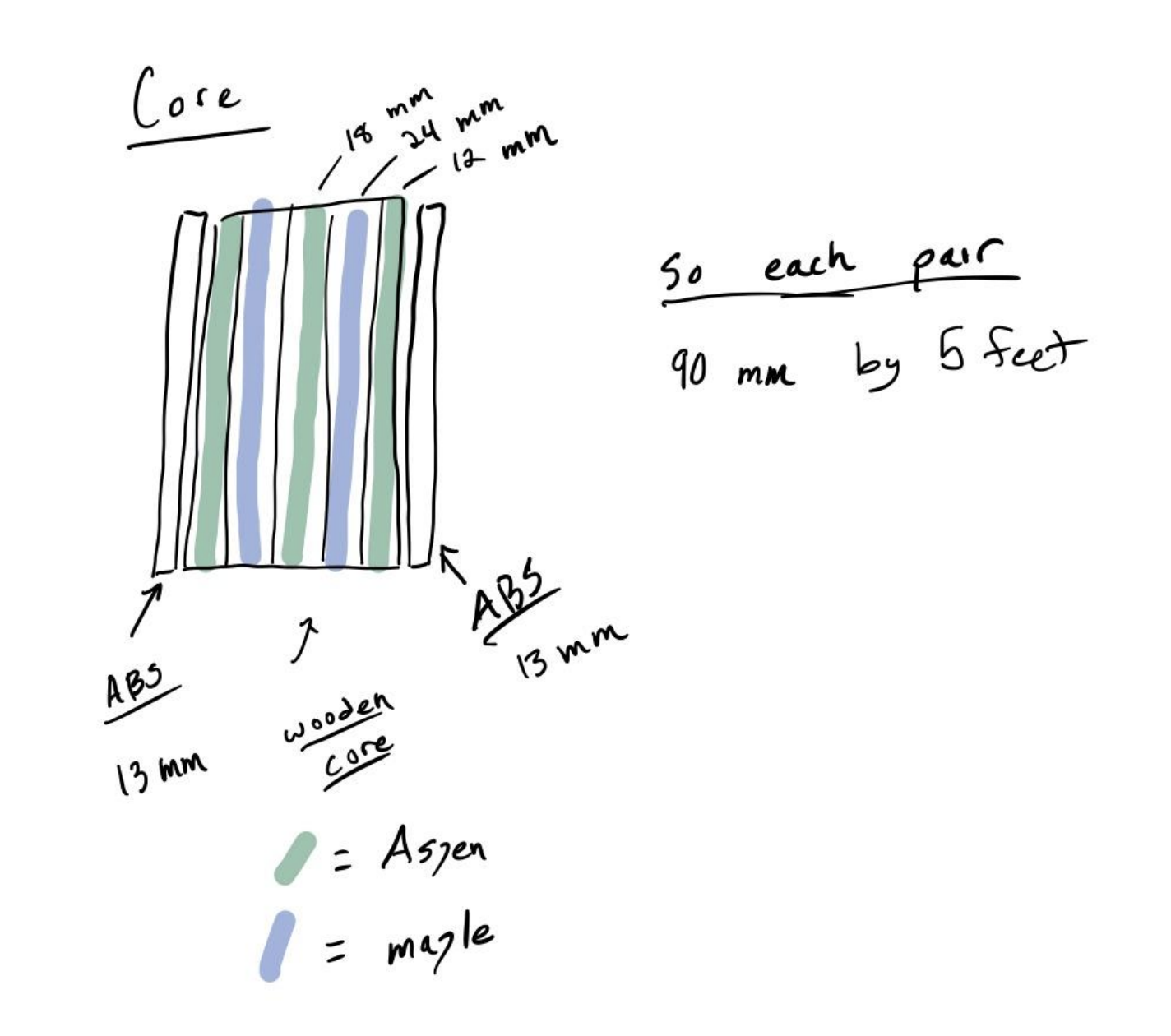Students:
Luca Pontone ’24 Daniel Sitbon-Taylor ’22 Travis Tavoso



Throughout this semester our team has worked to create custom skis. We initially planned on having the skis completed in this first semester, but quickly realized that this would be difficult based on size restraints in the shop and a lack of appropriate ventilation. As a result, we shifted our focus this semester towards understanding exactly the process of making skis in a relatively professional manner. In this research, we have become very knowledgeable about the process of ski making as it is done today, and are prepared to carry out the building process in my home shop.
Through our research, we learned the importance of choosing a specific type of wood when constructing the cores of skis. The cores of the skis are important as they help to keep the bindings in place. For this reason, using fibrous wood is crucial when designing ski cores. The fibrous wood allows for the binding screws to hold firmly as they are held tightly by the fibers of the wood. Some ski manufacturers today simulate this in the use of fiberglass or carbon layers overtop of the base. The group has decided that we do not want to copy this approach as it adds unnecessary weight to the skis.
Additionally, the group collectively helped to create measurements that would fit all of us. In skiing the length and thickness of skis is greatly influenced by the height, weight, and intended terrain of the skier. We worked together to find measurements that would suit all of our styles and bodies. We came to the conclusion that we would make a longer and thicker pair of skis that would be able to easily glide over deep snow. This design choice also played into our choice of making the skis as light as possible. Keeping the weight low will help us to float through deeper snow with greater ease. These measurements are included in previous reports on our skis.
As we look forward to the spring, we understand what must be done in order to complete these skis. We must create a ski press out of stock wooden 2X4X8. This ski press will help to keep the skis in shape and allow us to keep pressure on the skis when the resin cures. Next, we will need to cut the base P-tex plastic material into the desired shape of the skis. This shape is shown in our previous reports. From this we will need to construct the ski cores. The ski cores will be made out of aspen and maple wood. The aspen is light and will act as a filler, while the maple is fibrous and acts as our binding retention strips. These strips will be glued together and we will add ABS plastic sidewall to these pieces. This lay up is shown in image 1. below. Next, We will glue the metal edges of the skis to the base P-tex material. At this point, the skis will be ready to assemble. The first layer will be the base. Following will be the base material with carbon and fiberglass at each tip and tail. This filler will help to give flexibility in the tip and tails while adding tapering from the core to both. Next, we will sit the core onto the skis. Overtop of this will be another layer of fiberglass. Lastly, we will add the top sheet which will give us a custom graphic on the skis. All these steps are done in what is called the wet layup process, so throughout this assembly, we will be adding epoxy resin in between the layers. This will keep the skis held together. We will then place the skis into a large vacuum bag. This will add heat and compression to the epoxy resin, which will help the resin to cure properly and help the group to avoid the pieces from delaminating. These bags will be placed into the ski press we have created. If all goes accordingly then the skis will come out of the press after 2 days of curing and we will be able to cut the skis out along the base edge. We will then polish the material and have skis that should theoretically be ready to use.
